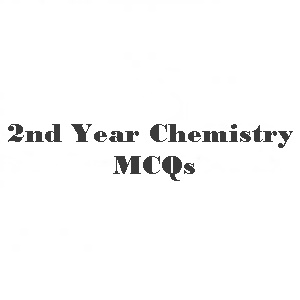Students can check the 2nd Year Chemistry Carboxylic Acids MCQs here. The important MCQs of 2nd Year Carboxylic Acids is given here. Carboxylic acids contain a carboxylic group. There is a nomenclature for carboxylic acids. There are different methods to prepare Carbolic acids. They have distinct physical characteristics. There are three types of reactions for Carboxylic acids including Reactions involving H atom, Reactions involving the OH group, and the reactions involving Carboxyl Group. The most important Carboxylic acid is Acetic Acid. Acetic Acids have their own characteristics and Uses. Amino Acid is an important organic compound that includes amino and carboxyl groups. They have a unique structure. There are different ways to synthesis Amino Acids. Amino Acids show different reactions. Peptides and Proteins are derived from Amino Acids. Now, you can get the important MCQs on this page below.
2nd Year Chemistry Carboxylic Acids MCQs

KEY POINTS
- Nomenclature of Carboxylic Acids
- Methods of preparation
- Physical Characteristics
- Reactions of Carboxylic Acids
- Acetic Acid
- Manufacture of Acetic Acid/Uses
- Amino Acids
- Synthesis of Amino Acids/Reactions
- Peptides and Protiens
Question#1: Acetic acid can be prepared by ethanol under:
- Oxidizing condition
- Redox condition
- Reducing condition
- 7.0 pH condition
Answer
Answer
Question#2: Ethanoic acid manufacturing through ethanol involves the use of:
- Acidified potassium dichromate
- Both A and C
- Ammonical silver nitrate
- Fehling s solution
Answer
Answer
Question#3: If ethanoic acid is to be prepared by hydrolysis of alkyl nitriles, which of the following can be the reagent to be hydrolyzed:
- CH3CN
- HCN
- CH3CH2CN
- None of these
Answer
Answer
Question#4: Hydrolysis of alkyl nitriles for preparing carboxylic acid requires:
- Acidic conditions
- Any of the above
- Alkaline conditions
- Both are simultaneously necessary
Answer
Answer
Question#5: Hydrolysis of CH3CH2CN will synthesize:
- Ethanoic acid
- Methanoic acid
- Propanoic acid
- Glutamic acid
Answer
Answer
Question#6: The production of acid amide involves the reaction of ethanoic acid with:
- Amine
- Amino acid
- Ammonia
- All of these
Answer
Answer
Question#7: Which of the following can be the reagent to produce acetyl chloride from ethanoic acid?
- Thionyl chloride
- NaCI
- PCI5
- Both A and C
Answer
Answer
Question#8: During the formation of an acetyl chloride from ethanoic acid what actually happens:
- Displacement of the H+ from the acid by CI
- Displacement of the OH-1from the acid by CI
- Attachment of CI with the carbonyl carbon
- None of these
Answer
Answer
Question#9: During the formation of an ester from acetic what actually happens:
- Displacement of the H+ from the acid by CI
- Displacement of the OH-1 from the acid by OCH3
- Attachment of OCH3 with the carbonyl oxygen
- Displacement of the H+ from the acid by OCH3
Answer
Answer
Question#10: During the formation of an acid amide from ethanoic acid, what actually happens?
- Displacement of the H+ from the acid by CI
- Displacement of the OH-1 from the acid by NH2
- Attachment of NH2 with the carbonyl oxygen
- Displacement of the H+ from the acid by NH2
Answer
Answer
Question#11: Hydrolysis of amides gives the corresponding:
- Carboxylic acid
- Alkane
- Alcohol
- Amino acid
Answer
Answer
Question#12: If NaOH is added to an unknown organic compound and the reaction evolves ammonia, then this unknown organic compound is most likely to be:
- An ester
- A carboxylic acid
- An acid amide
- An alkene
Answer
Answer
Question#13: Organic acids (carboxylic acids) are considered as:
- Strong acids
- Mild acids
- Weak acids
- Mineral acids
Answer
Answer
Question#14: Pure organic acids are much:
- Weak than chloro substituted acids
- Same strength as chloro substituted acids
- Stronger than chloro substituted acids
- None of these
Answer
Answer
Question#15: The strength of the organic acids and chloro substituted acids is measured by pKa scale such that the smaller value of pKa corresponds to:
- Stronger acid
- Mild acid
- Weaker acid
- Very weak acid
Answer
Answer
Question#16: Alkane nitriles can be prepared by treating alkyl halide with:
- Alcohol
- Potassium cyanide
- Alcoholic potassium cyanide
- Water
Answer
Answer
Question#17: Ethanoic acid can be prepared by hydrolysis of:
- MethyI chloride
- Methane nitrile
- Ethane nitrile
- EthyI chloride
Answer
Answer
Question#18: Carboxylic acids react with active metals to form their salt and?
- H2O
- H2O and CO2
- CO2only
- H2 gas
Answer
Answer
Question#19: Which pair can be used as a reactant for the preparation of acetyl chloride?
- CH3COOH, HCI
- CH3COOH, SOCI2
- CH3COOH, PCI5
- Both B and C
Answer
Answer
Question#20: For producing a carboxylic acid derivative. The addition of a nucleophile to carboxyl group is always following by displacement of:
- -COOH group
- H atom
- -OH group
- OR
Answer
Answer
Q.21: Which statement is incorrect about the formation of an ester?
- When carboxylic acids are heated with alcohol esters are formed
- Esters have a fruity smell
- Esters are used as artificial flavors
- Ester is formed in the presence of NaOH
Answer
Answer
Question#22: Carboxylic acid reacts with ammonia to form which salt?
- Acid amide
- Ammonium acetate
- Acetic anhydride
- AcetyI chloride
Answer
Answer
Question#23: Which ester is used as an orange flavor?
- Amyl acetate
- Benzyl acetate
- octyl acetate
- IsobutyI formate
Answer
Answer
Question#24: Which one is formed by the hydrolysis of acid amide?
- Ammonium acetate
- Acetic anhydride
- Acetyl chloride
- Carboxylic acid
Answer
Answer
Question#25: Esters are______.
- Acidic
- Basic
- Neutral
- None of these
Answer
Answer
Question#26: Here the strongest acid is________.
- CH3COOH
- CH3CH2COOH
- CI-CH2-COOH
- Br-CH2-COOH
Answer
Answer
Question#27: Which of the following formula is more reactive for hydrolysis?
- -COOR
- -COOH
- -CONH2
- -COCI
Answer
Answer
Question#28: The work of concentrated H2SO4in esterification process is as:
- Dehydrating agent and catalyst
- Dehydrating agent
- Hydrolyzing agent
- Catalyst
Answer
Answer
Question#29: The solubility of carboxylic acid in water gradually decreases with:
- Decreases in molecular mass
- Increases in molecular mass
- Increases the amount of acid
- Decreases the amount of water
Answer
Answer
Question#30: AcetyI chloride is soluble in which solvent?
- H2O
- Acetone
- Ether
- Both B and C
 Online Exams Tests Preparation
Online Exams Tests Preparation


